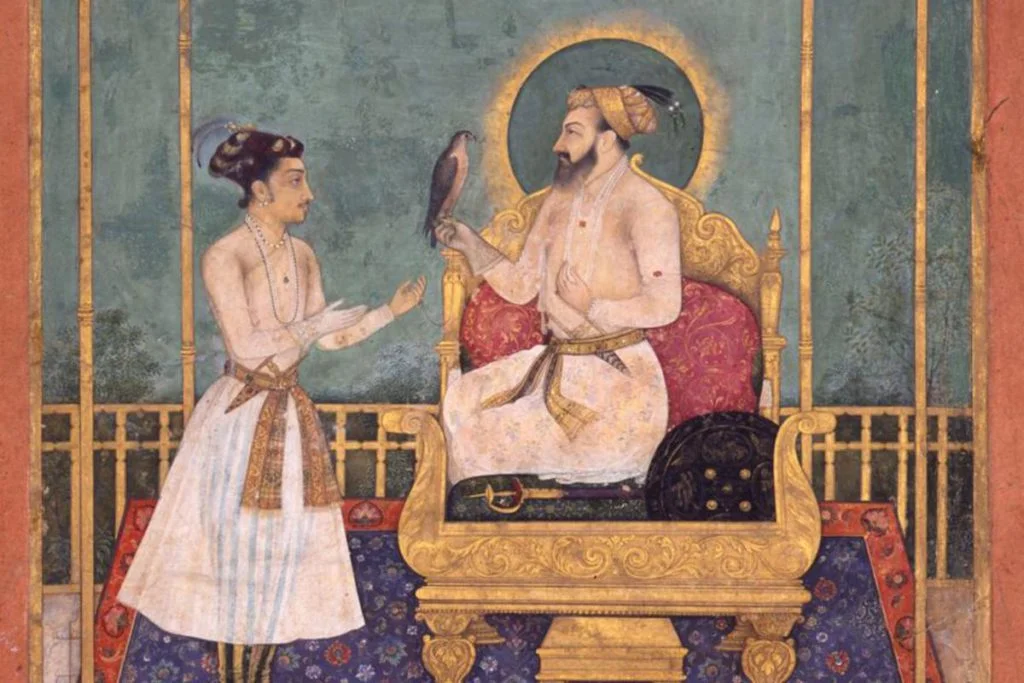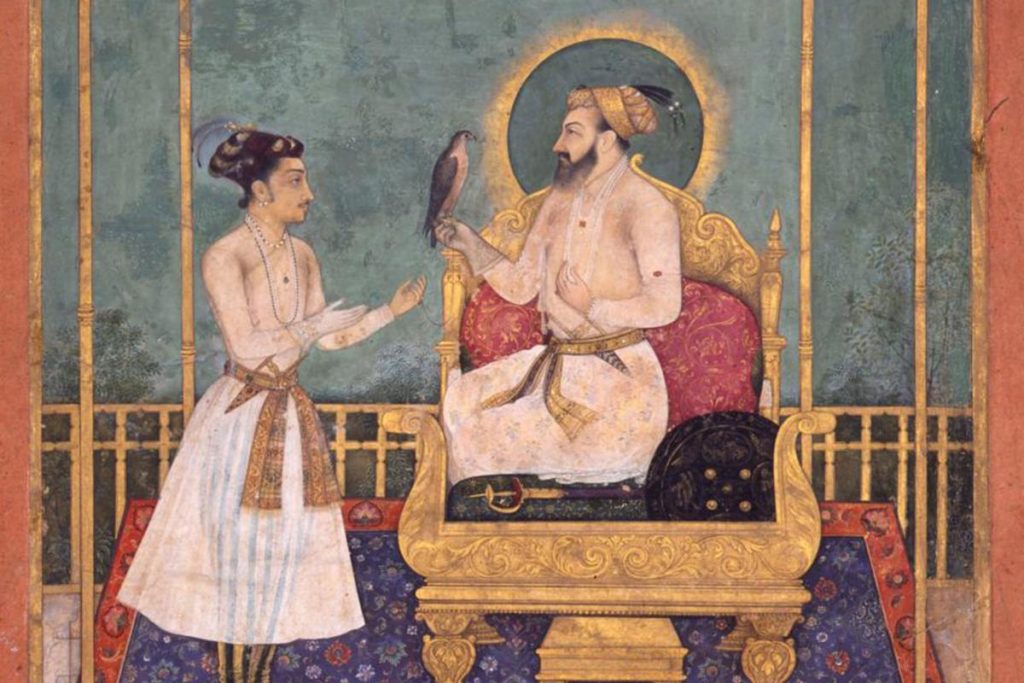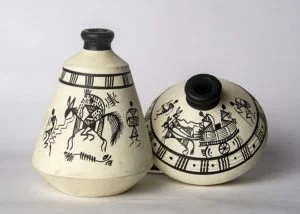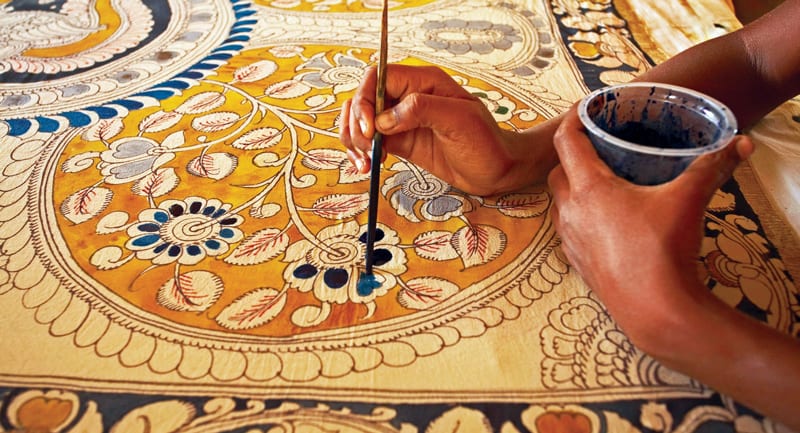Humans have engaged themselves in various forms of art from the very early stages of human evolution. While some forms have dated back a million years, ‘Spray Painted Graffiti’ is one of the earliest art forms. From a historical perspective, Mughal art is one to watch.

In the Indian context, art is one common aspect in almost every major event in the history of India. Right from the reign of Maurya down to the rule of Peshwas, one can witness different art forms across all dynasties. The dynasts, however, have had a keen interest in art and its various forms.
The Mughals had ruled almost the whole of India for about three centuries. They have had an efficient reigning period since the inception of the dynasty in 1526. Between the 16th and the 17th century, the rulers established trading organizations that increased the demand for Indian goods abroad. Still, with the expansion of trade, the nation was also introduced to some new ideologies and technologies that changed the fundamental outlook of ordinary people.
One can easily witness the change in the element of art from the Mughal period. After all, the Mughals brought the concept of Persian miniature paintings into the artistic aspect of India and blended it with the Islamic and Indian styles.

Some Famous Mughal Art Paintings Commissioned by Akbar
- Gulistan
- Darab Nama
- Nilgai
- The Dying Inayat Khan
- Goverdhan
- Khamsa of Nizami
- Baharistan
- Hamzanama
Some key features of Mughal art set it apart from the paintings of every other known dynasty of India. These key features, you can easily find only in the paintings during the rule of Akbar, Shah Jahan, and Jahangir.
Important Features of Mughal Art
Confined to the Mughal Court
Mughal art took in and absorbed the Indian element but none of the paintings ever actually represented Indian emotions or the daily lives of the Indian people. The paintings remained limited to the Mughals and their courts and culture and never reached the Indian people.

Synthesis of Two Elements in Mughal art
The Mughals introduced the Persian element into the Indian style of art and blended it with the Islamic style to create the perfect elegance of variety and diversity. When the Mughal rulers came to India, they also brought with them, Persian painters. At the same time, they patronized the artisans of India, and the collaboration between these two schools of painters resulted in the synthesis.
Themes of the Mughal Art Paintings
The Persian miniature paintings are of bright colors with extensive detailing. Such paintings accompanied the text in manuscripts and art books. Apart from this miniature style, one can also witness painting themes from the epics of Mahabharata and Ramayana.
Eventually, with nationwide admiration, themes like the Indian sceneries and landscapes also came into trend. These paintings were based on close and detailed observations of nature with high regard to aesthetics.
Depiction of Political Realities
Many paintings of the Mughal era depict the political realities of the Mughals, like the portraits of Akbar showcase despotism (exercise of absolute power). In contrast, some other paintings have served to communicate ideas about the power of kings and their kingdoms.

Many think that these Mughal paintings speak the truth and realities of the imperial court. And one striking fact includes the absence of any female in the courtroom. If you observe and analyze these paintings, you will learn about the treatment of women during that time. They were rarely permitted to or assigned any roles in the courts. Although, it doesn’t mean that the importance of females- princesses, milk-mothers, and queens was totally redundant. One can find exquisite scenes from the household in some Mughal Art paintings.
Nature as the major element
Akbar was known as the Father of Mughal art as he was a patron of a huge variety of Mughal era paintings. The paintings during his rule had a wide variety. However, his successor Jahangir had a great fascination for nature and took a keen interest in the portraiture of birds, animals, and flowers.

Many historians believe that the Mughal school paintings acquired more extraordinary charm, refinement, and dignity under Jahangir. After all, the paintings were by first-grade artists. These paintings are so extravagant and polished that the artists employed in the Imperial Government were given the title of first-grade artists. People call such paintings the Imperial Mughal Paintings.
One economic advantage that came with the paintings painted during Jahangir’s reign was the increased employment. Each painting had at least four painters working on it. While one artist outlines the scenes of men and animals, the landscape specialist works on the background and the colorist works on the colors.
Abudant Use of Colours
The painters in the Mughal era made use of a large variety of colors. The colors ranged from pastels to dark-themed shades. However, one color that was abundantly used was golden. Gold was believed to bring triumph, achievement, and success. The color was associated with prosperity, and it portrayed extravagance, prestige, sophistication, and superiority.
Diversity within the Mughal Art Paintings
The Mughals reigned in India for three centuries. This significant period with several rulers brought about a diversity in art styles and designs. Due to the king’s varied interests and successors, one can see such variety in Mughal art. Akbar, for instance, was more interested in illustrating books and manuscripts on subjects like history, romance, poetry, legends, and fables of both Persian and Indian origin.

However, Jahangir’s interest had a major contrast. The paintings elaborated on-court scenes, and the style was formally ordered with soft and harmonious colors. When Shah Jahan succeeded Jahangir, the art shifted primarily to architecture. The style became more rigid, and the portraits resembled abstract figures.
Last words on Mughal Art Paintings
Mughal art paintings have been passed down from generations, and each painting holds immense value since they accurately reflect the lives of the kings at the time. These paintings depict practices and realities of the daily life of the imperial court. Mughal art accurately represents the Mughal era and tells fascinating stories right from the victories of the rulers to the social life of the people.
For more facts like this, come back to Podium Blog and check out Art Classes archives. For other interactive articles on brilliant Indian art forms, don’t forget to check out these Promising Indian Art forms which make excellent storyboards, and notable Indian artists who made their mark!
Share with your friends





